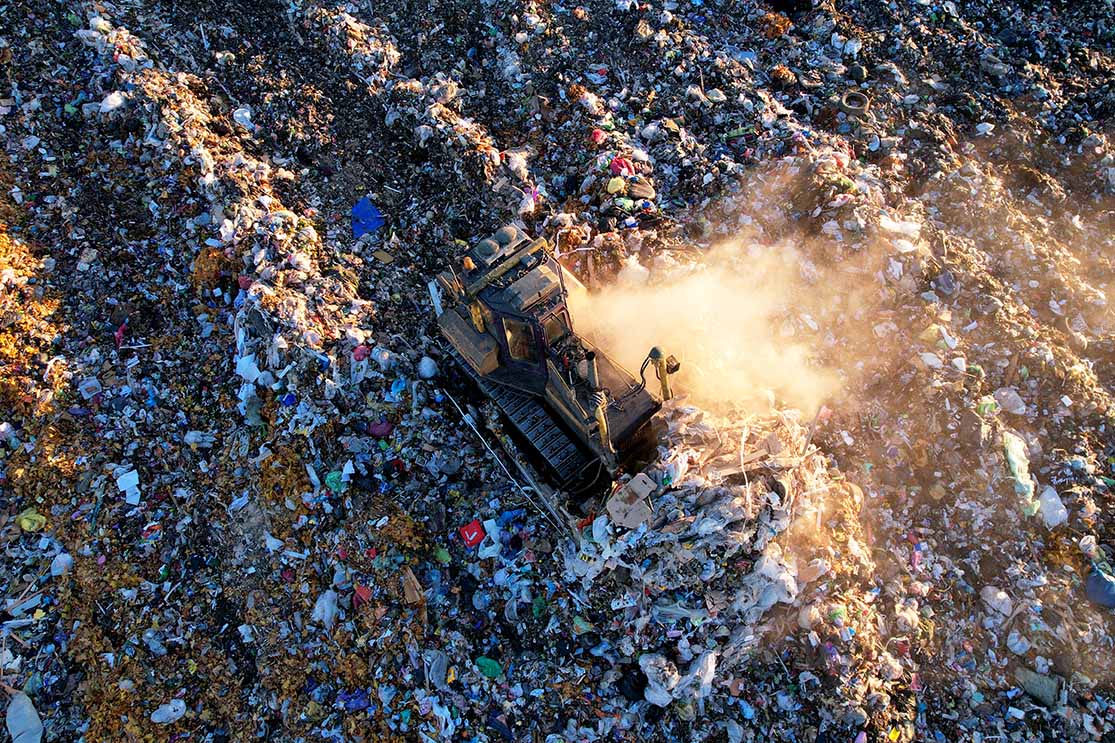
Oregon residents generated about 6.1 million tons of material in 2022, with 3.7 million tons going to landfills and incinerators and 2.4 million tons recovered. | Maksim Safaniuk/Shutterstock
The amount of material Oregonians disposed of in 2022 dropped significantly from the year before, largely due to fewer building-destroying wildfires, and about 2% of overall material was plastic.
Oregon’s atest Material Recovery and Waste Generation Rates report reported about 6.1 million tons of material generated, down 6.2% year over year, with 3.7 million tons going to landfills and incinerators and 2.4 million tons recovered. That’s a 8.8% decrease in tonnage going to landfill and a 1.8% decrease in tonnage recovered compared to 2021.
The weight-based recovery rate came in at 39.4%, an increase of about 2% from 2021 but still below the goals by the Oregon Legislature, which are 52% recovery by 2020 and 55% recovery by 2025.
The report noted that several factors contributed to lower-than-anticipated recovery, including China’s National Sword policy in 2018, which the state “did not anticipate” when setting the initial goals. The report noted that the state’s extended producer responsibility law, the Plastics Pollution and Recycling Modernization Act, “will significantly affect recycling operations starting July 2025.”
“The law has numerous aims and expands the concept of successful recycling beyond the weight based generation and recovery rates described in this report,” the report stated. “The law’s goals include making recycling easier for the public to use, expanding access to recycling services, upgrading recycling facilities, and reducing social and environmental harms. In 2025 and beyond, this report may look substantially different.”
2022 statistics
The material recovery rate includes materials that were recycled, composted and burned for energy. In 2022, 64% of the material recovered was recycled, 25% was composted and 11% was burned.
Broken out by percentage and weight, around 28.5% of the material recovered in 2022 was metals, 25.2% was yard debris, 19.1% was cardboard, 10.3% was wood, 7% was other papers, 4.2% was glass, 3% was food waste, 2% was plastic, 1.9% was “other,” and 0.4% was electronics.
The amount of plastics recovered in Oregon fell by 10 million pounds year over year. A total of about 59 million pounds of rigid plastic containers were collected for recycling in 2022, down from about 63 million pounds in 2021. Film collection specifically dropped by just under 6 million pounds, from about 20 million pounds in 2021 to 14 million pounds in 2022.
“The tonnage of rigid plastic containers fell about 2,000 tons from the all-time high in 2021, but still is higher than the average tons recycled over the previous decade,” the report noted. “Other rigid plastics and film plastics are not included in any curbside or commingled recycling program in Oregon, and so most of the recycling of these materials is done through commercial or private programs or some drop-off recycling.”
In late 2020 and 2021, wildfires destroyed more than 6,000 structures, creating about 383,000 tons of fire debris, excluding asbestos-containing debris. In 2022, wildfires destroyed two structures, which accounts for most of the decrease in total material generated between the two years, the report noted.

